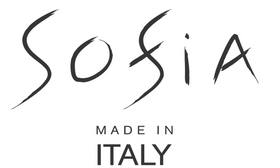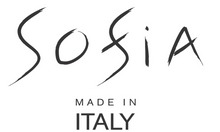Sustainable Fashion in Italy: A Green Revolution in Elegance
Italy, renowned for its flawless sense of style and contribution to the global fashion industry, is undergoing a transformative journey towards sustainability. The echoes of traditional craftsmanship blend harmoniously with contemporary eco-conscious practices, marking a new era for Italian fashion. This shift towards sustainability reflects not only a commitment to environmental responsibility but also a recognition of the changing preferences of conscious consumers.
The Roots of Sustainability
At the heart of Italy's sustainable fashion movement lies a deep respect for tradition and artisanship. Italian artisans, known for their skilful techniques and dedication to quality, have been pivotal in redefining the narrative of fashion. The focus is not merely on creating beautiful garments but on fostering a connection between the wearer, the creator, and the environment. Many brands have embraced sustainable materials, opting for organic fabrics, recycled fibres, and innovative alternatives that reduce the environmental impact of production.
Luxury Meets Responsibility
Italian luxury fashion houses, once synonymous with opulence and extravagance, are increasingly aligning their values with sustainability. Icons like Gucci and Prada are incorporating sustainable practices into their operations, addressing concerns about the industry's contribution to pollution and waste. From sourcing ethically produced materials to implementing eco-friendly manufacturing processes, these brands are redefining what it means to be luxurious in the 21st century.
The Rise of Eco-Friendly Initiatives
Milan, the fashion capital of Italy, has become a hub for eco-friendly initiatives and sustainable fashion events. Milan Fashion Week now features a growing number of designers and brands dedicated to promoting sustainability. This shift is not merely a response to consumer demand; it represents a collective effort within the fashion community to address the environmental challenges associated with the industry. Sustainable fashion is not just a trend in Italy; it's a commitment to the well-being of the planet.
Italian Innovation
Innovation has always been at the forefront of Italy's fashion landscape, and sustainability is no exception. Italian designers are embracing cutting-edge technologies and eco-friendly practices to create fashion that is not only aesthetically pleasing but also environmentally responsible. From 3D printing to zero-waste pattern cutting techniques, these innovations are shaping the future of Italian fashion.
Local and Circular Economies
Sustainability in Italian fashion extends beyond materials and production processes; it encompasses the entire lifecycle of a garment. Many brands are adopting circular economy models, encouraging repair, reuse, and recycling. This approach not only reduces the environmental impact but also promotes a more conscious and responsible consumer culture. Additionally, there is a renewed emphasis on supporting local artisans and small-scale producers, fostering a sense of community and preserving traditional craftsmanship.
Challenges and Opportunities
While the strides towards sustainable fashion in Italy are commendable, challenges remain. Balancing the demands of a rapidly changing industry withthe principles of sustainability requires constant innovation and commitment. The high cost associated with sustainable practices poses a challenge for many designers and brands, making it crucial for the industry to find scalable solutions that benefit both the planet and the bottom line.
In conclusion, Italy's journey towards sustainable fashion is a testament to the industry's ability to evolve and adapt. The marriage of elegance and eco-consciousness is reshaping the narrative of Italian fashion, proving that style and sustainability can coincide harmoniously. As Italy continues to lead by example, it inspires not only the fashion world but also consumers worldwide to make choices that reflect a shared commitment to a greener, more sustainable future.













